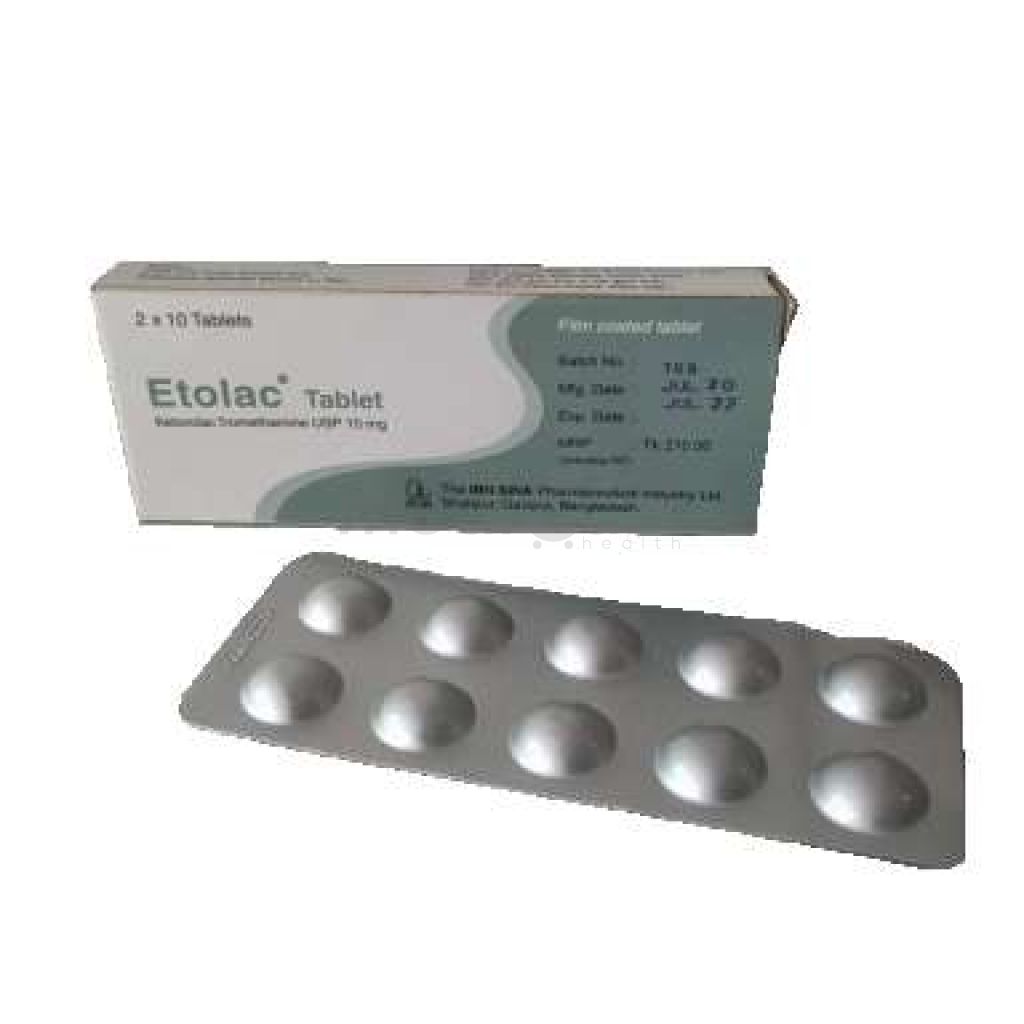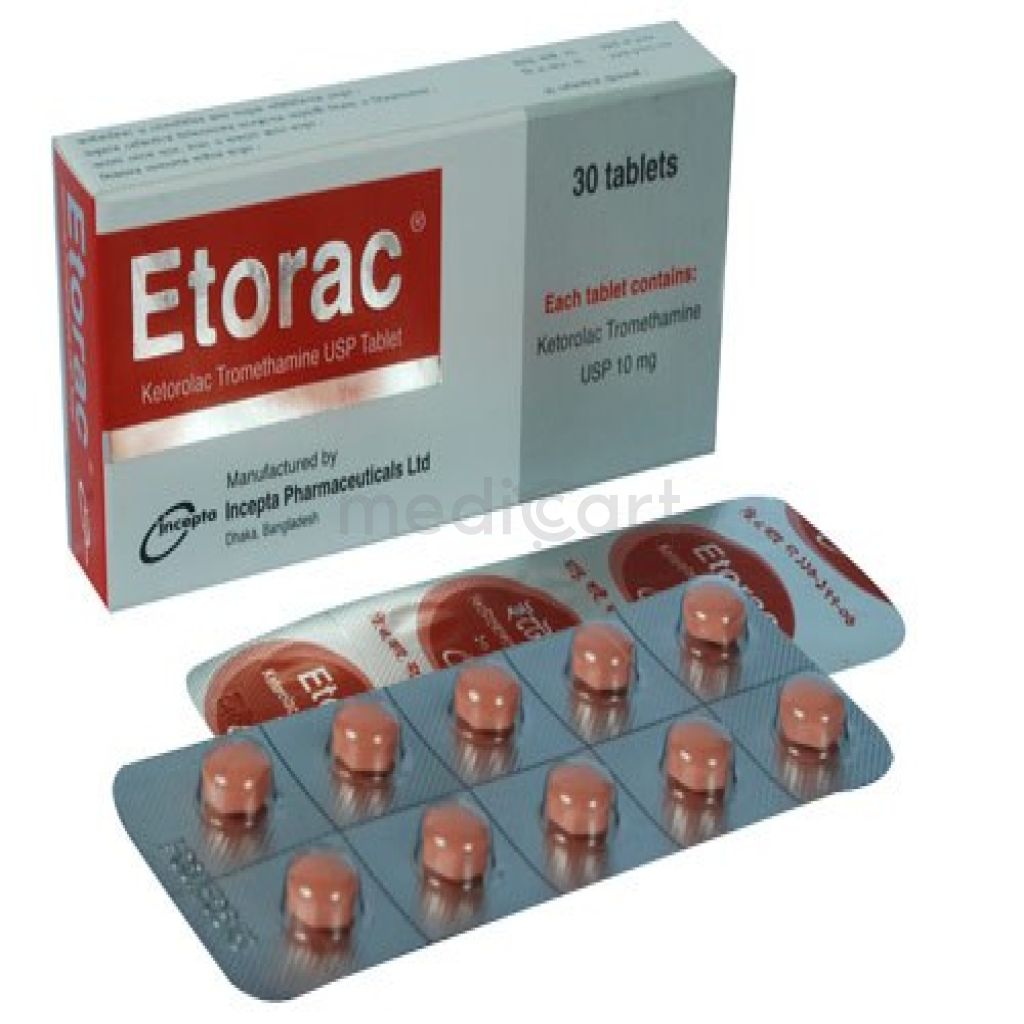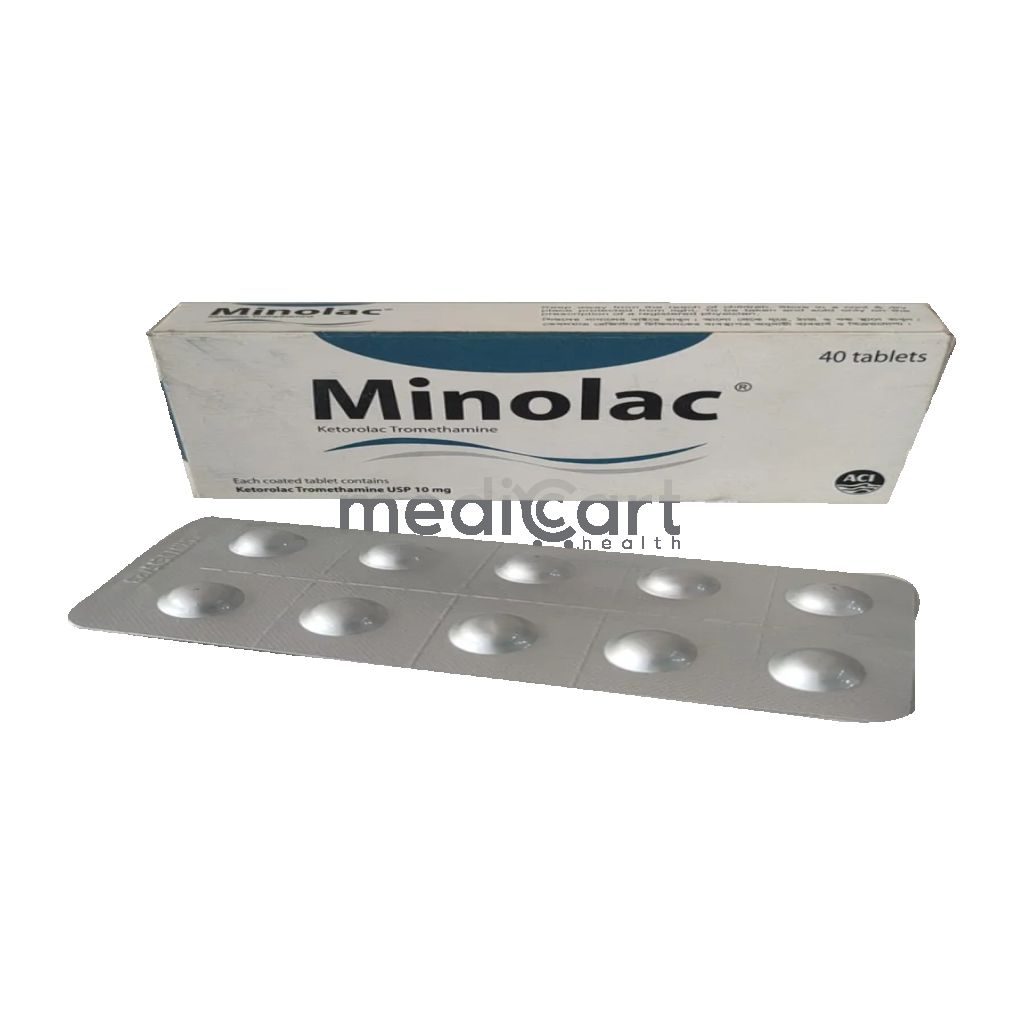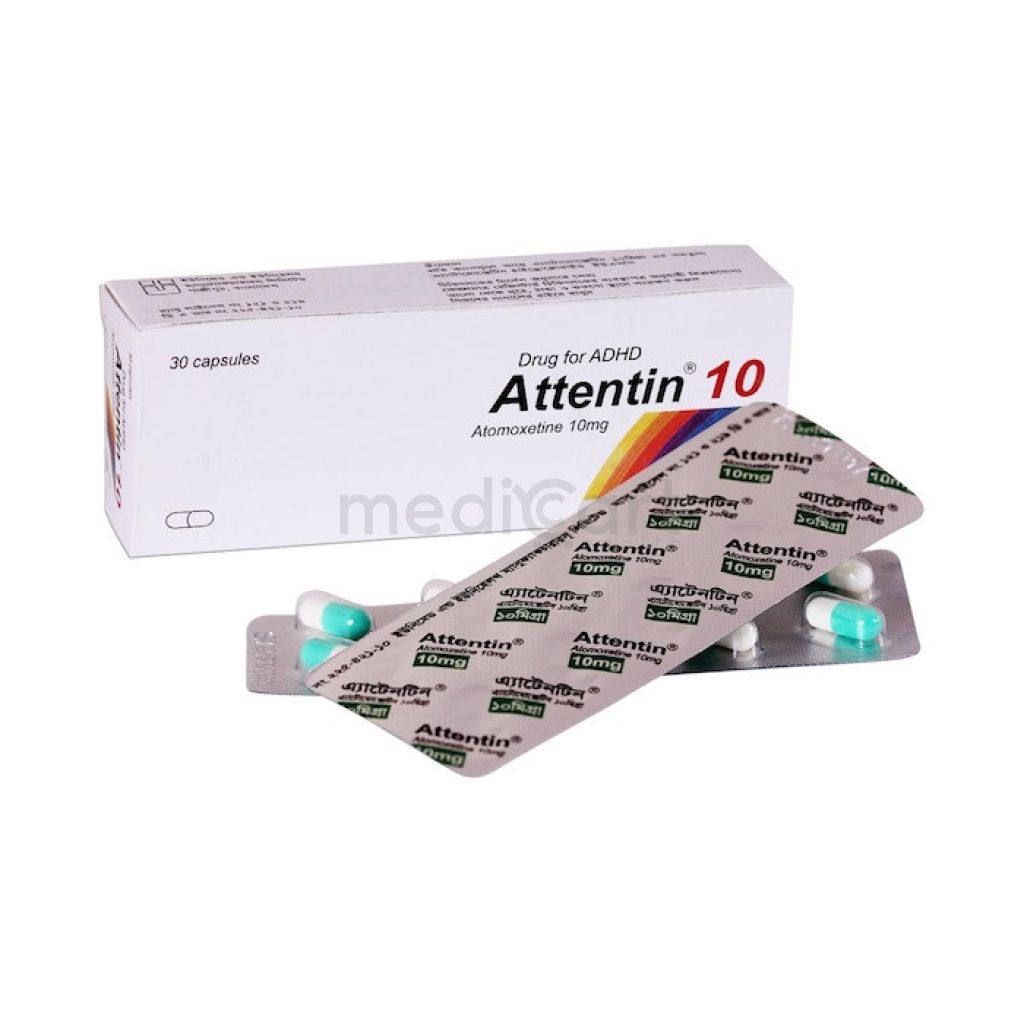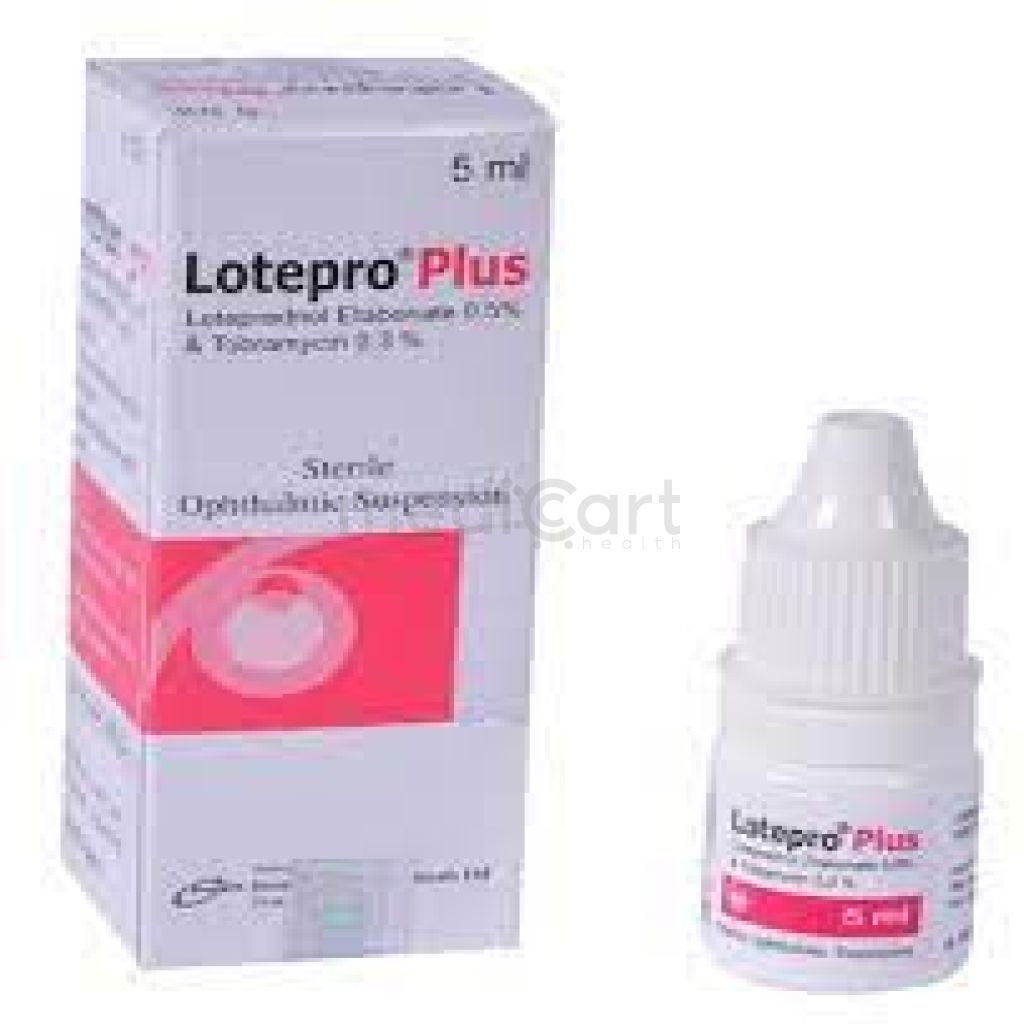

Xidolac Meltab 10 mg - 10mg
Tablet
Pack Size :
10 Tablet x 1 Strip
Generics :
Ketorolac Tromethamine
Manufacturer :
Beximco Pharmaceuticals Ltd.
Best Price *
TK
120.00
* Delivery will be done in Dhaka city only.
More Information About - Xidolac Meltab 10 mg - 10mg
Description
Generic Name
Ketorolac TromethaminePrecaution
Elderly, patients weighing <50 kg, hepatic dysfunction, heart failure, predisposition to reduced blood volume or renal blood flow. Mild renal impairment; monitor renal function closely. Lactation: Drug excreted in breast milk with multiple doses; use contraindicatedIndication
Moderate to severe painContra Indication
Hypersensitivity to aspirin or other NSAIDs, asthma. Hypovolaemia or dehydration. Do not give postoperatively to patients with high risk of haemorrhage. History of peptic ulcer or coagulation disorders. Nasal polyps, angioedema, bronchospasm. Labour. Moderate to severe renal impairment. GI bleeding, cerebrovascular bleeding. As prophylactic analgesic before surgery. Pregnancy, lactation.Dose
N/ASide Effect
>10% Headache (17%),Somnolence (3-14%),Dyspepsia (12-13%),GI pain (12-13%),Nausea (12-13%) 1-10% Diarrhea (3-9%),Dizziness (3-9%),Pruritus (3-9%),Edema (1-3%),Increased blood urea nitrogen (BUN) (3%),Constipation (<3%),Purpura (<3%),Increased serum creatinine (2%),Drowsiness (6%),Hypertension (4%) <1% Abnormal thinking,Anaphylaxis,Blurred vision,Bronchospasm,Cholestatic jaundice,Depression,Difficulty in concentration,Dysgeusia,Euphoria,Hemolytic-uremic syndrome,Hepatitis,Hyperkalemia,Hyponatremia,Hypotension,Increased liver function test values,Insomnia,Laryngeal/lingual edema,Liver failure,Melena,Nervousness,Oliguria,Pallor,Peptic ulcer,Rash,Rectal bleeding,Stomatitis,Urinary frequency,Urinary retention,Vasodilation Potentially Fatal: Anaphylaxis. Severe skin reactions. MI, stroke, GI bleeding.Pregnancy Category
Name : C
Description
Animal reproduction studies have shown an adverse effect on the fetus and there are no adequate and well-controlled studies in humans, but potential benefits may warrant use of the drug in pregnant women despite potential risksMode of Action
Ketorolac inhibits prostaglandin synthesis by decreasing the activity of the cyclooxygenase enzyme.Interaction
May reduce effects of antihypertensives eg ACE inhibitors or angiotensin II receptor antagonists (AIIA). Increased risk of renal toxicity with ACE inhibitors, diuretics. Increased adverse effects with aspirin or other NSAIDs. Hallucinations may occur when used with fluoxetine, thiothixene, alprazolam. Potentially Fatal: Increased risk of GI bleeding with warfarin. May increase toxicity of methotrexate (MTX) and lithium. Increased plasma concentrations with probenecid.Pregnancy Category Note
Pregnancy category: C; D in third trimester (may cause premature closure of ductus arteriosus) Lactation: Drug excreted in breast milk with multiple doses; use contraindicatedAdult Dose
Oral Adult Moderately Severe Acute Pain Short-term (<5 days) management of moderately severe acute pain that requires analgesia at opioid level; not indicated for minor or chronic painful conditions IV: 30 mg as single dose or 30 mg q6hr; not to exceed 120 mg/day IM: 60 mg as single dose or 30 mg q6hr; not to exceed 120 mg/day PO: 20 mg once after IV or IM therapy, THEN 10 mg q4-6hr; not to exceed 40 mg/day Elderly IV: 15 mg as single dose or 15 mg q6hr; not to exceed 60 mg/day IM: 30 mg as single dose or 15 mg q6hr; not to exceed 60 mg/day PO: 10 mg once after IV or IM therapy, THEN 10 mg q4-6hr; not to exceed 40 mg/day Dosing Considerations Always begin with parenteral therapy; oral administration indicated only as continuation of IV/IM dosing, if necessary Duration of therapy should not exceed 5 daysChild Dose
<2 years Safety and efficacy not established 2-16 years Single dose: 0.5 mg/kg IV/IM once; not to exceed 15 mg Multiple dose: 0.5 mg/kg IV/IM q6hr; not to exceed 5 daysRenal Dose
Renal impairment Severe: Contraindicated Moderate (moderately elevated serum creatinine): Use 50% of recommended dosage; not to exceed 60 mg/day IM/IVAdministration
N/ADisclaimer
The information provided herein are for informational purposes only and not intended to be a substitute for professional medical advice, diagnosis, or treatment. Please note that this information should not be treated as a replacement for physical medical consultation or advice. Great effort has been placed to provide accurate and comprehensive data. However, Medicart along with its authors and editors make no representations or warranties and specifically disclaim all liability for any medical information provided on the site. The absence of any information and/or warning to any drug shall not be considered and assumed as an implied assurance of the Company.

